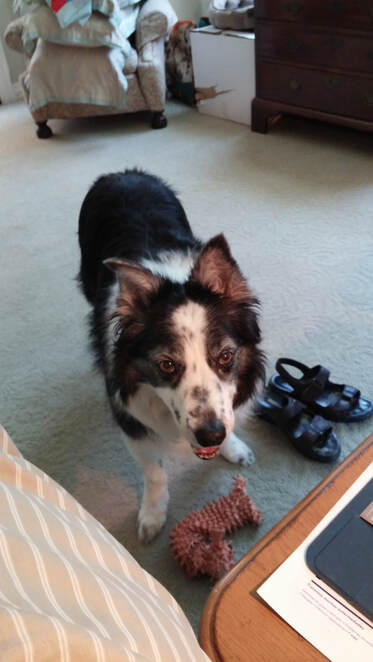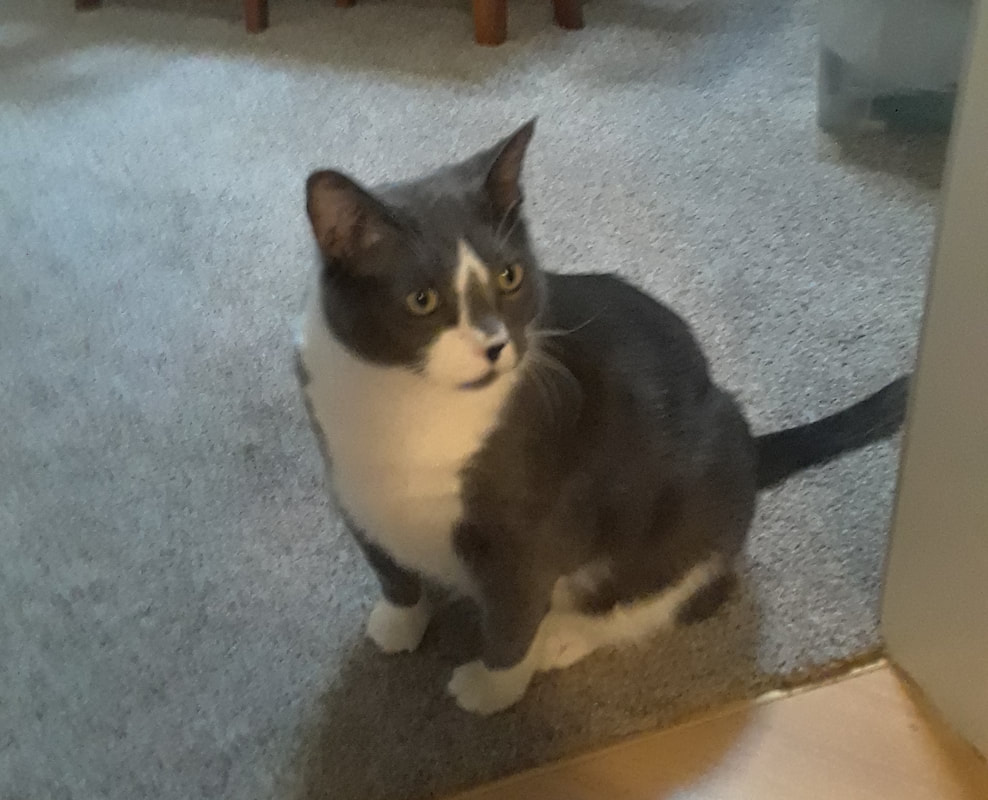When dogs and humans live together, the dog needs to be in a calm-submissive state of mind. The person in the relationship needs to project CALM-ASSERTIVE energy. When this happens, the dog relaxes. This takes discipline on the person’s part. Dogs read energy and movements of people. They know where you are “coming from.” They can’t be fooled. They need a pack leader more than a buddy. And they need this first, before affection and play. You tell them when to wake up, when to eat, where to go and at what pace, where to pee, when to rest, when to chase and not chase, and when to roll over. Your dog should also receive at least thirty minutes of exercise, at least twice a day. That is where your friendly dog walker comes in, as walking, like for people, is excellent for dogs. A regular walk is “vital,” and can prevent destructive behavior such as chewing up your belongings, or being aggressive with other dogs. If this sounds controlling on the person’s part, it is designed that way, leading your dog to feel more relaxed and comfortable.Before leaving the house, the dog must be in a calm, submissive state. You should always go out the door first, in front of your dog. The dog should not go in front of the person unless he/she is given permission. If you are not “doing it right” by Cesar’s standards, don’t feel too bad. Oprah Winfrey, a very strong leader with people, was afraid to walk her small dog because she was afraid she would get into fights with other dogs. Cesar was able to teach her to be a calm, assertive leader with her dog who became able to be around other dogs, even in a pack. He says, “I rehabilitate dogs. I train people.” In other words, people need to be taught how to be appropriate with dogs, and then, a special bonding happens. If you need training with your dog, call us at Dallas Neighborhood Pet Sitting and we will suggest several local trainer options. And, for that twice a day exercise, calls us anytime. We love to walk your dogs! Ref: Millan, Cesar (First ed.2006). Melissa Jo Peltier. CESAR’S WAY, THE NATURAL EVERYDAY GUIDE TO UNDERSTANDING AND CORRECTING COMMON DOG PROBLEMS). Harmony Press.
0 Comments
About four years ago, my cat Miracle got fed up with living with a big dog, and she took up residence down the street, where there is a creek, lots of foliage, brush, and trees. She survived there by staying up high above the creek. It took me ten days to coax her back home. I would go down there before dawn, and she would come out to see me but would not let me touch her. So I then decided to rent a trap. I put tuna in it three days in a row before I got her to take the bait! At home she slept for two days and did not leave again, but still hated the dog at the house and yelled at him every chance she got.
I have friends who have trapped feral cats to get them neutered or spayed, then followed by socializing them and adopting them out. One friend did this with 25 cats. Recently I discovered an organization called ”Alley Cat Allies.” They are a volunteer-run network, operating in the US and around the world. They have been in Dallas for over 30 years, promoting what they call “TNR: trap, neuter, and return.” This organization teaches people how to trap cats, to neuter them and then let them go back to living outside. I am so surprised and pleased that these people take an interest in reducing the cat population and keeping them safe! Alley Cat Allies has three goals:
This is a whole new way for me to think about “alley cats.” One experiment was done near San Francisco where the “cat colony” was developed by TNR over a period of 16 years and now there are very few feral kittens. The universal sign that a cat has been neutered is either a tattoo on the lower abdomen or a clipped ear. Sometimes they also have been vaccinated, but you should not count on this. Alley Cat Allies also promotes chipping and scanning. Scanners have been put in police precincts and training done on how to use the scanner. You can buy a small scanner to find out if cats have been chipped. Studies have been done that show that feral cats do not spread disease; that in fact they are not more often sick than domesticated cats, although this is controversial and more studies are needed. If you want to read more about this organization, including webinars, or to find resources near you, you can check them out at Alleycat.org. |
|
MALORIE TOLLES
DALLAS NEIGHBORHOOD PET SITTING
DALLAS NEIGHBORHOOD PET SITTING
We cover: Richardson, Plano, Garland, Addison, Carrollton, Farmers Branch, and North Dallas.
|
Site powered by Brand Genie
|


